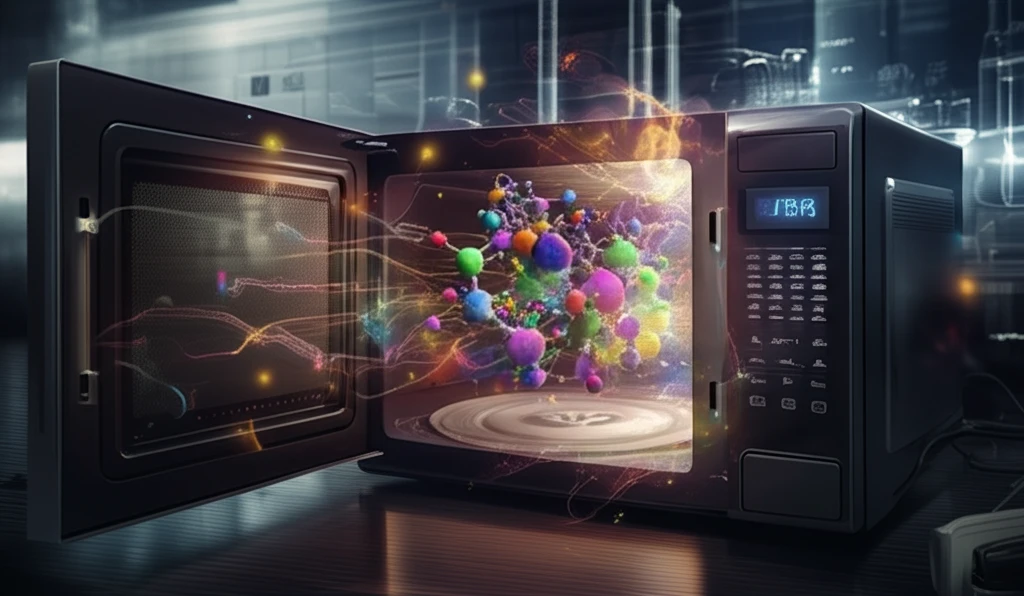
Unlock the Secrets of Organic Chemistry: How Microwave-Assisted Reactions are Changing Everything
"Discover the innovative use of bismuth triflate in microwave-assisted Michael-type additions, revolutionizing the synthesis of complex molecules."
Organic chemistry is a constantly evolving field, with researchers always seeking new and improved methods for synthesizing molecules. Traditional methods can often be time-consuming and require harsh conditions, but recent advances in microwave-assisted reactions are changing the game, offering faster, cleaner, and more efficient synthetic routes.
One area where these advances are particularly impactful is in the synthesis of complex molecules containing indole and pyrrole rings. These structures are crucial in pharmaceuticals, agrochemicals, and materials science, making their efficient synthesis highly desirable. However, traditional methods for modifying these rings can be challenging, often requiring multiple steps and specialized reagents.
A recent study highlights a significant breakthrough in this area: the use of bismuth triflate as a catalyst in microwave-assisted Michael-type additions. This innovative approach allows for the rapid and efficient addition of 1-(arylsulfonyl)-pyrroles and -indoles to methyl vinyl ketone, opening new doors for creating a diverse range of complex molecules. Let’s dive into why this research is so important and how it can impact various fields.
What Makes Microwave-Assisted Michael-Type Additions a Game-Changer?

The Michael reaction, also known as the Michael addition, is a fundamental carbon-carbon bond-forming reaction in organic chemistry. It involves the nucleophilic addition of a carbanion or another nucleophile to an α,β-unsaturated carbonyl compound. While this reaction has been known for over a century, achieving it efficiently with certain substrates, like pyrroles and indoles bearing electron-withdrawing groups, has been historically difficult.
- Faster Reaction Times: Microwave irradiation drastically reduces reaction times from hours or days to just minutes.
- Improved Yields: The use of bismuth triflate as a catalyst often results in higher yields of the desired product.
- Milder Conditions: The reaction can be performed under milder conditions, reducing the risk of side reactions and decomposition of sensitive compounds.
- Wider Substrate Scope: This method expands the range of substrates that can be used in Michael additions, including challenging compounds like N-protected pyrroles and indoles.
Why This Matters: Implications for the Future
The development of microwave-assisted Michael-type additions using bismuth triflate represents a significant step forward in organic synthesis. By enabling faster, more efficient, and milder reactions, this method has the potential to accelerate research in various fields, from drug discovery to materials science. As scientists continue to explore and optimize this approach, we can expect even more groundbreaking discoveries and applications in the years to come. The ability to streamline the synthesis of complex molecules will undoubtedly fuel innovation and lead to new and improved products that benefit society.
